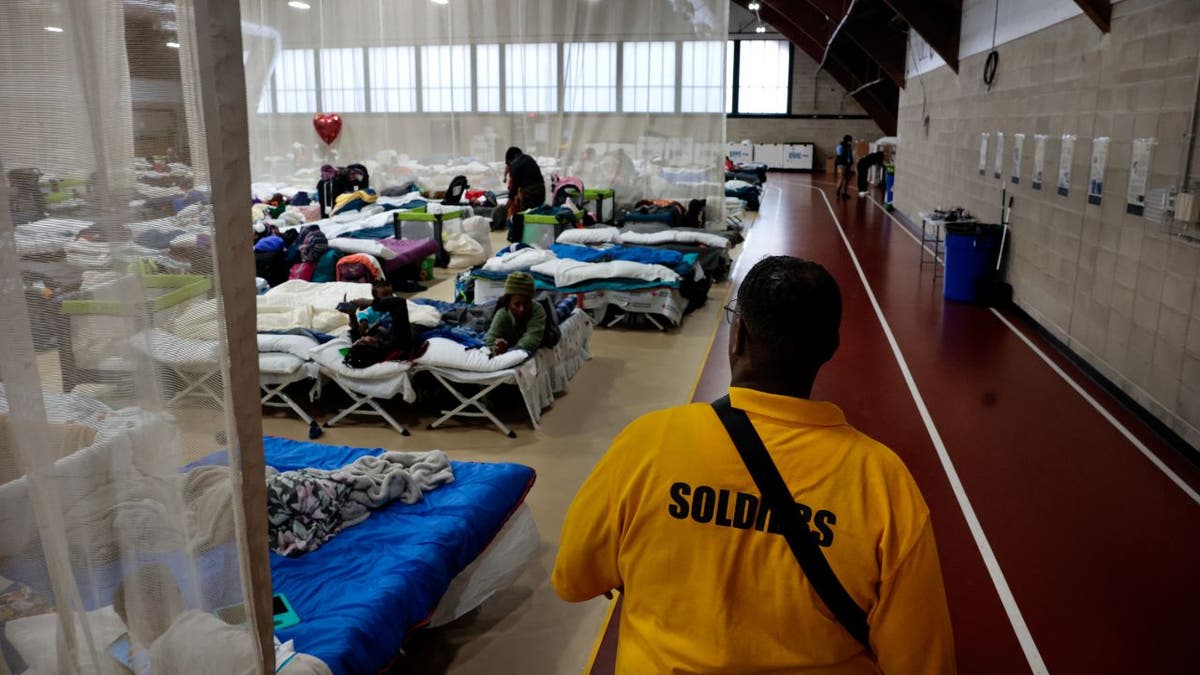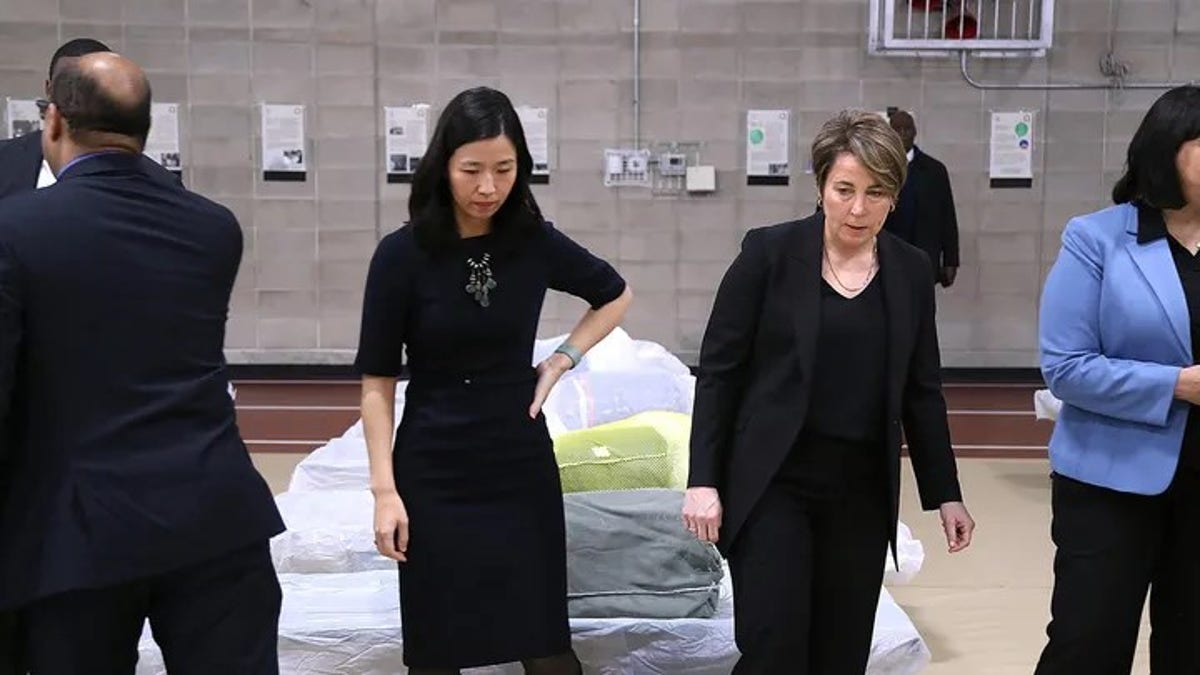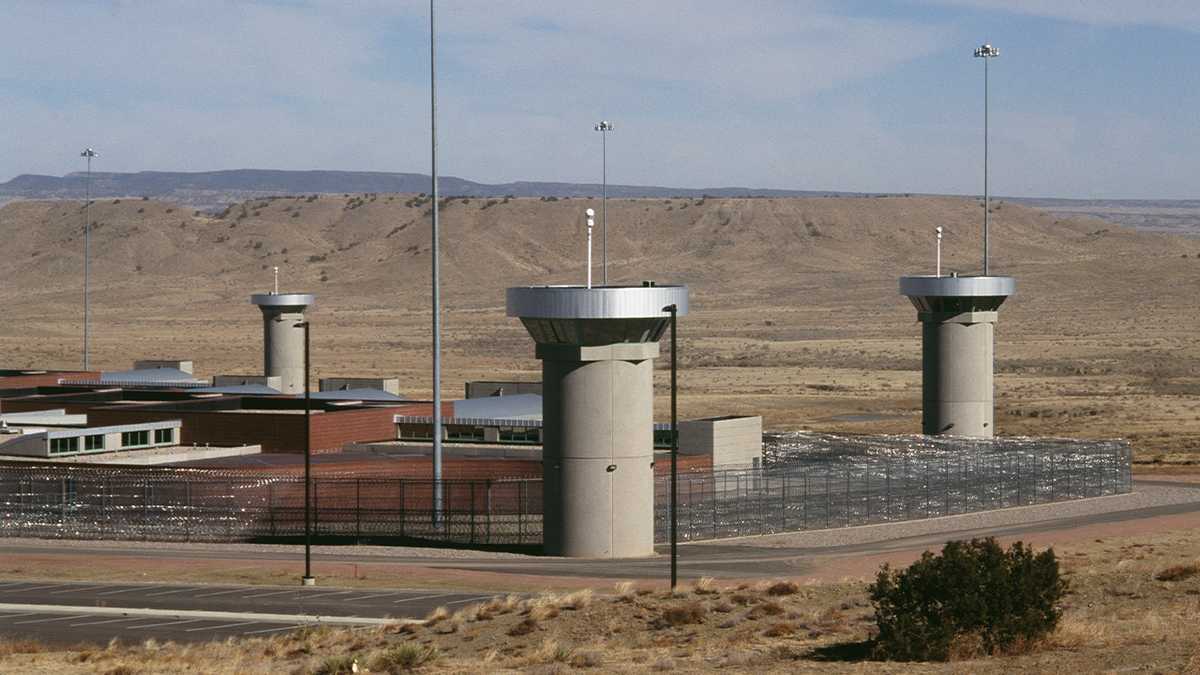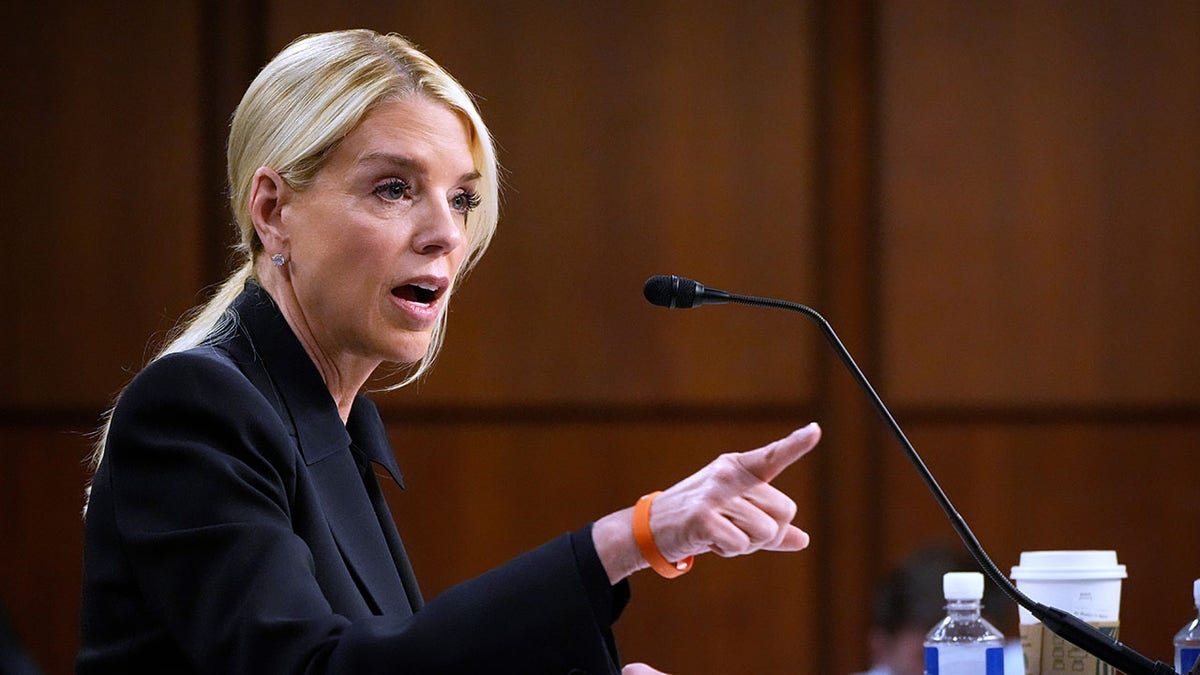INTERNACIONAL
$30K in migrant housing aid has Dem gov on hot seat for ‘revolving door’ policy

NEWYou can now listen to Fox News articles!
While she is shutting down her sanctuary state’s migrant shelters, critics are accusing Democratic Massachusetts Gov. Maura Healey of simply shifting the costs over to a program that makes migrants eligible to receive at least $30,000 in housing assistance over two years.
The Boston Herald reported in June that the Healey administration had increased spending in Massachusetts’ HomeBASE program to $97 million in 2025, up from $9.5 million in 2022, according to state data.
The outlet reported that eligible families in the Massachusetts-run shelter system were being provided with $30,000 in rental assistance over two years. According to the Herald, the total caseload for HomeBASE increased under Healey from 1,473 in January 2023 to 7,767 in April 2025, more than a 400 percent increase. The outlet also said that some eligible families could qualify for an additional $15,000 in a third year of assistance but that state officials planned to pause third year assistance in July.
After that report, Massachusetts GOP Chair Amy Carnevale commented that the HomeBASE program amounted to being «shelters by another name.»
DHS SCOOPS UP CRIMINAL ILLEGAL IMMIGRANT SUSPECTED OF KILLING MAN ON LAWNMOWER: ‘SENSELESS TRAGEDY’
As Massachusetts Democratic Governor Maura Healey closes down the sanctuary state’s migrant shelters, she is facing criticism for simultaneously shifting costs to dramatically increase spending on a program that detractors say makes immigrants eligible to receive $30,000 in housing assistance. (Photo by Jonathan Wiggs/The Boston Globe via Getty Images and Joseph Prezzioso/AFP via Getty Images)
«Taxpayers are giving migrant families nearly limitless free rental assistance. Meanwhile, federal action means these families won’t be receiving work permits anytime soon,» she went on, adding, «The migrant shelter crisis is not over, and cost-shifting is not leadership.»
This month, Healey announced the closure of all remaining hotel shelters in the Bay State amid the formal termination of her executive emergency focused on the state’s Biden-era migrant influx.
In a statement emailed to Fox News Digital, Carnevale said that «friends, favors, and failures continue to emerge even as she declares that the migrant crisis is over.»
«Healey should rip off the Band-Aid and tell the public whether these same oversights are occurring in the HomeBASE program,» she continued.
TOM HOMAN PUTS SANCTUARY CITIES ‘ON NOTICE’ AS TRUMP ADMINISTRATION CRACKS DOWN ON IMMIGRATION

A security guard patrols the emergency overflow shelter for migrants at the Melnea A. Cass Recreation Complex in Boston. (Craig F. Walker/The Boston Globe via Getty Images)
«The abuse of taxpayer dollars, coupled with a stunning lack of oversight by Maura Healey and her administration, will define her legacy as governor.»
Meanwhile, Jon Fetherston, a former Massachusetts migrant shelter director who blew the whistle about rampant crime and abuse taking place in the system, commented that «instead of creating stability, HomeBase has become a revolving door of short-term rental assistance.»
He said that because migrants often spend the bulk of their $30,000 on upfront costs, many become unable to sustain their housing within months.
«The Healey Administration’s expansion of the HomeBASE program was sold to the public as a solution, one that would save money, reduce shelter dependence, and help migrant families become self-sufficient. But the reality is far different,» he explained. «HomeBASE is now a bloated, mismanaged program that’s failing both the taxpayers who fund it and the migrants it claims to help.»
ICE RAID TIPOFFS FROM DEM LAWMAKER COULD MEAN CHARGES, SAYS DHS REP: ‘LOOKS LIKE OBSTRUCTION’

Boston Mayor Michelle Wu and Gov. Maura Healey tour a Boston facility housing over 300 migrant families. (John Tlumacki/The Boston Globe via Getty Images)
«HomeBASE, in its current form, is a broken promise,» he said. «Taxpayers are footing a nearly $100 million bill with little transparency, no measurable outcomes and no end in sight. The promise of savings from closing hotel shelters is being quietly replaced with backdoor spending that still lacks accountability.
CLICK HERE TO GET THE FOX NEWS APP
«This isn’t a hand-up; it’s a setup for failure.»
Fox News Digital reached out to Healey’s office for comment but did not receive a response by the time of publication.
Fox News Digital’s Charles Creitz contributed to this report.
sanctuary cities,massachusetts,immigration,democratic party,border security,migrant crime
INTERNACIONAL
Tokio rechazó las acusaciones “infundadas” de Beijing tras una carta remitida a la ONU e instó a China al diálogo

El Ejecutivo japonés salió este sábado al cruce de las recientes denuncias de China contra la primera ministra Sanae Takaichi, a quien el régimen chino acusó de alterar la postura histórica de Tokio sobre su respaldo a Taiwán.
Desde Tokio calificaron las imputaciones como “totalmente infundadas” y subrayaron la continuidad de su línea política, negando un cambio en la posición oficial sobre el estrecho. Así lo expresó la portavoz Maki Kobayashi durante la cumbre del G20 en Johannesburgo, en declaraciones reproducidas por Bloomberg.
Kobayashi aseguró estar al tanto de la carta enviada por Beijiing a António Guterres, secretario general de la Organización de las Naciones Unidas (ONU), y recalcó que Japón explicó ya “en repetidas ocasiones” el sentido de los comentarios de su primera ministra, remarcando la apuesta del gobierno nipón por “el diálogo”.
Pese a ello, en Johannesburgo no fue posible avanzar en una conversación directa: desde China descartaron una reunión oficial entre Takaichi y el primer ministro Li Qiang, aunque ambos compartieron espacio en la foto de grupo de la cumbre.
El origen de la controversia radica en las declaraciones de Takaichi sobre la potencial respuesta japonesa ante una posible escalada militar de China contra Taiwán. El régimen liderado por Xi Jinping reaccionó enviando una misiva donde advierte de posibles “medidas de autodefensa” si Japón llegara a intervenir militarmente en apoyo a la isla, al tiempo que buscó movilizar respaldo internacional en Naciones Unidas.
Lejos de dar marcha atrás, Takaichi reiteró este viernes su negativa a retractarse de sus afirmaciones referidas a Taiwán y defendió la determinación japonesa de actuar igual ante una emergencia de seguridad en la región. Al calor del conflicto, incluso el cónsul chino en Osaka, Xue Jian, llegó a compartir (y luego eliminar) un mensaje en el que apostaba por “cortar el sucio cuello” de la primera ministra nipona.
Al mismo tiempo, las relaciones bilaterales registran nuevas restricciones: entre las últimas medidas, Beijing desaconsejó a sus ciudadanos visitar Japón, ordenó la suspensión de importaciones de mariscos japoneses y detuvo el estreno de nuevas películas japonesas en su mercado.
En cuanto a la relación entre Tokio y Taipéi, Taiwán confirmó el viernes pasado el levantamiento de las restricciones que, desde 2011, afectaban a las importaciones de alimentos originarios de Fukushima (Japón). Las autoridades informaron que dejarán de aplicar los requisitos de doble certificación y la inspección exhaustiva por lotes.
La medida surge poco después de que el gobernador de Niigata, Hideyo Hanazumi, autorizara la reactivación de la central nuclear de Kashiwazaki-Kariwa —la mayor del mundo—, que permanecía fuera de servicio desde el accidente nuclear ocurrido en Fukushima Daiichi en 2011 a raíz de un terremoto y posterior tsunami.
El anuncio del gobierno taiwanés marca la normalización de criterios para la entrada de productos japoneses en la isla, en un contexto donde la energía nuclear y la seguridad alimentaria siguen siendo ejes de debate en Japón.
La disputa regional se enmarca en décadas de sensibilidad diplomática. Desde que los lazos políticos entre China y Taiwán se cortaron en 1949 tras la guerra civil, solo se restablecieron en formatos no oficiales a partir de los años 80, mientras Tokio y Beijing mantienen diferencias históricas sobre la soberanía y seguridad en la región.
International,Relations,Africa,Diplomacy / Foreign Policy
INTERNACIONAL
EXCLUSIVE: Bondi DOJ transfers death row inmates commuted by Biden to ‘supermax’ prison

NEWYou can now listen to Fox News articles!
FIRST ON FOX — Two federal inmates previously on death row — one a crooked New Orleans cop, the other behind a multi-state killing spree — have been transferred to a notorious «supermax» prison in Colorado, the Justice Department told Fox News Digital.
News of their transfers comes as U.S. Attorney General Pam Bondi looks to crack down on the previous administration’s sweeping clemency actions, especially those against violent crime.
The former death row inmates were transferred Thursday to the U.S. Penitentiary Administrative Maximum Facility in Florence, Colorado, also known as «ADX,» Justice Department officials confirmed.
TONY HAWK, TAIWAN AND A FLASHLIGHT: TRUMP ASSASSINATION ATTEMPT SUSPECT’S BIZARRE DEFENSE
They are among the 37 death row inmates whose sentences former President Joe Biden commuted shortly before leaving office last December. The news prompted criticism and complaints that the record clemency and commutation actions were done as a political «Hail Mary» and without proper vetting.
Eight death row inmates have already been transferred to ADX, the Justice Department told Fox News Digital, bringing to 10 the number of death row inmates that have been transferred to the prison since mid-September.
President Donald Trump walks with Attorney General Pam Bondi during a visit to the Justice Department March 14, 2025, in Washington, D.C. (Andrew Harnik/Getty Images)
More are expected soon. all 37 death row inmates commuted by Biden are expected to be moved to the prison by «early next year,» the Justice Department told Fox News Digital.
The effort comes as Bondi and the Trump administration have sought to reverse some of the Biden administration’s efforts on criminal justice reform, with an emphasis on cracking down on violent crime.
Though sentence commutations cannot be fully reversed, Justice Department officials told Fox News Digital, Bondi has prioritized ways to penalize these individuals in coordination with directives from Trump and to ensure that the «conditions of confinement» are «consistent with the security risks those inmates present because of their egregious crimes, criminal histories and all other relevant considerations,» according to an earlier DOJ memo.
«Two more monsters who plotted and violently murdered innocent people will spend the rest of their lives in our country’s most severe federal prison,» Attorney General Pam Bondi told Fox News Digital in a statement.
«This Department of Justice will continue to seek accountability for the families blindsided by President Biden’s reckless commutations of 37 vicious predators.»
Like the eight former death row inmates sent to Colorado’s supermax prison, the two criminals processed in ADX Thursday have been convicted of particularly heinous crimes.
One individual chased down his ex-girlfriend from Roanoke, Virginia, to Charlotte, North Carolina, where he cut phone lines to the apartment she was living in before using cans of gasoline to set the building on fire.
BIDEN CLEMENCY ANNOUNCEMENT GETS MIXED REVIEWS ON CAPITOL HILL: ‘WHERE’S THE BAR?’

The ADX supermax prison in Florence, Colo. (Robert Daemmrich Photography Inc/Sygma via Getty Images)
Though she escaped via a second-story window and was hospitalized for second- and third-degree burns, he followed her back to her family’s home in Virginia two months later, where he gunned her down on the streets of her neighborhood and just steps from her mother.
Another inmate, a former New Orleans police officer known as «Robocop» for his large physical demeanor and aggressive law enforcement style, was caught on tape by the FBI as he ordered and orchestrated the killing of a mother of three who had come to the precinct hours earlier to submit a supposedly confidential brutality complaint about his behavior that she witnessed on her way home the night before.
The FBI had stumbled upon the conversation as part of a broader probe it had started to investigate a so-called «protection racket» between cocaine dealers in New Orleans and the city’s police force, which had been guarding a warehouse stocked with the drug. The same officer was later revealed as one of the chief conspirators in the protection racket.
BIDEN STIRS OUTRAGE IN SCRANTON BY COMMUTING ‘KIDS FOR CASH’ JUDGE’S SENTENCE

Attorney General Pam Bondi appeared before a Senate Judiciary Committee oversight hearing on Capitol Hill in Washington. (AP Photo/Mark Schiefelbein)
He was also found to have falsely testified in two murder cases, including one murder he has since been linked to. The statements were used to exonerate four men from prison, including three teenagers who had been wrongfully convicted of a murder 28 years earlier.
ADX is the only true federal «supermax» prison in the U.S., and its inmates are as notorious as the prison’s reputation.
Among them are Ramzi Yousef, convicted in the 1993 World Trade Center bombing; Dzhokhar Tsarnaev, one of the Boston Marathon bombers; former Sinola Cartel leader Joaquín Guzmán, or «El Chapo»; and Mamdouh Mahmud Salim, the co-founder of al Qaeda.
Shortly after her confirmation as attorney general, Bondi issued a memo aimed at «restoring a measure of justice» to the victims’ families.
The measures granted by Biden earned more criticism than former President Barack Obama. As Fox News reported at the time, the vast majority of Obama’s clemency actions focused on commuting the sentences of federal inmates who met certain criteria outlined under his administration’s Clemency Initiative.
Bondi hosted victims’ families earlier this year to hear their concerns about the commutations, the DOJ said. Some said they had been stunned by the eleventh-hour commutations and that they had not been given a heads-up by the Biden administration.
CLICK HERE TO GET THE FOX NEWS APP
In February, Bondi issued a memo to the Bureau of Prisons ordering an evaluation of where these prisoners should be detained.
donald trump,justice department,politics,crime world
INTERNACIONAL
Teachers called ‘true heroes’ after repelling grizzly bear that attacked school group, injuring 11

NEWYou can now listen to Fox News articles!
Teachers fended off a grizzly bear that attacked a school group walking along a trail in British Columbia, Canada, on Thursday, officials said.
«The group had stopped along a trail near the community when a grizzly bear emerged from the forest and attacked,» Insp. Kevin Van Damme of British Columbia’s Conservation Officer Service, said in an update on social media. «Teachers successfully repelled the bear using pepper spray and a bear banger.»
Eleven people were injured in the attack, including students in the fourth and fifth grade, according to CBC News.
Two were in critical condition, two in serious condition and the other seven were treated at the scene, the British Columbia Health Services said.
STATE DEPARTMENT WARNS AMERICANS IN JAPAN AS DEADLY BEAR ATTACKS KILL 13 PEOPLE SINCE APRIL: ‘BE DILIGENT’
British Columbia’s Conservation Officer Service said the grizzly emerged from the woods and «attacked.» (Matthew Bailey/VWPics/Universal Images Group via Getty Images)
The incident happened in Bella Coola, a town more than 400 miles north of Vancouver.
The victims were taken to Bella Coola Hospital and were being transferred to Vancouver for further care, Van Damme said.
Officials were still searching for the bear as of Friday, who they believe may have been previously injured.
HIKER’S FRIEND WATCHES IN HORROR AS BROWN BEAR DRAGS MAN INTO BUSHES ON MOUNTAIN: REPORT
«We recognize this incident is distressing for the community. We are in close contact with the Nuxalk Nation as our investigation continues. We thank them for their collaborative efforts to ensure community awareness and shared safety information,» Van Damme said. «Our thoughts are with the victims and their families, and we wish them a full and speedy recovery.»

Bella Coola is more than 400 miles north of Vancouver in British Columbia. (Google Maps)
CLICK HERE TO GET THE FOX NEWS APP
Tamara Davidson, British Columbia’s Minister of Environment and Parks, called the teachers who fought off the bear «true heroes,» adding that they were well-prepared, according to the Guardian.
world,wild nature,canada

 POLITICA1 día ago
POLITICA1 día agoTras la orden de decomiso de los bienes de CFK, la Justicia evalúa avanzar sobre el departamento de San José 1111

 POLITICA2 días ago
POLITICA2 días agoJavier Milei sobre las coimas en la ANDIS: “Hay mucha mala intención política”

 ECONOMIA3 días ago
ECONOMIA3 días agoEl Gobierno invierte USD 300 millones en la compra de 43 trenes nuevos para el AMBA



























